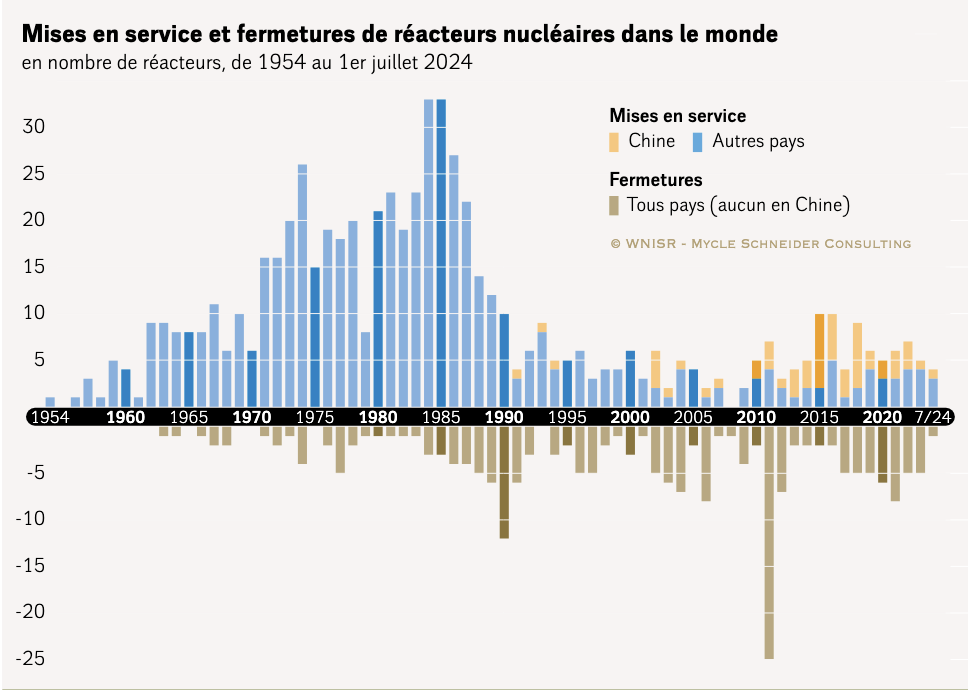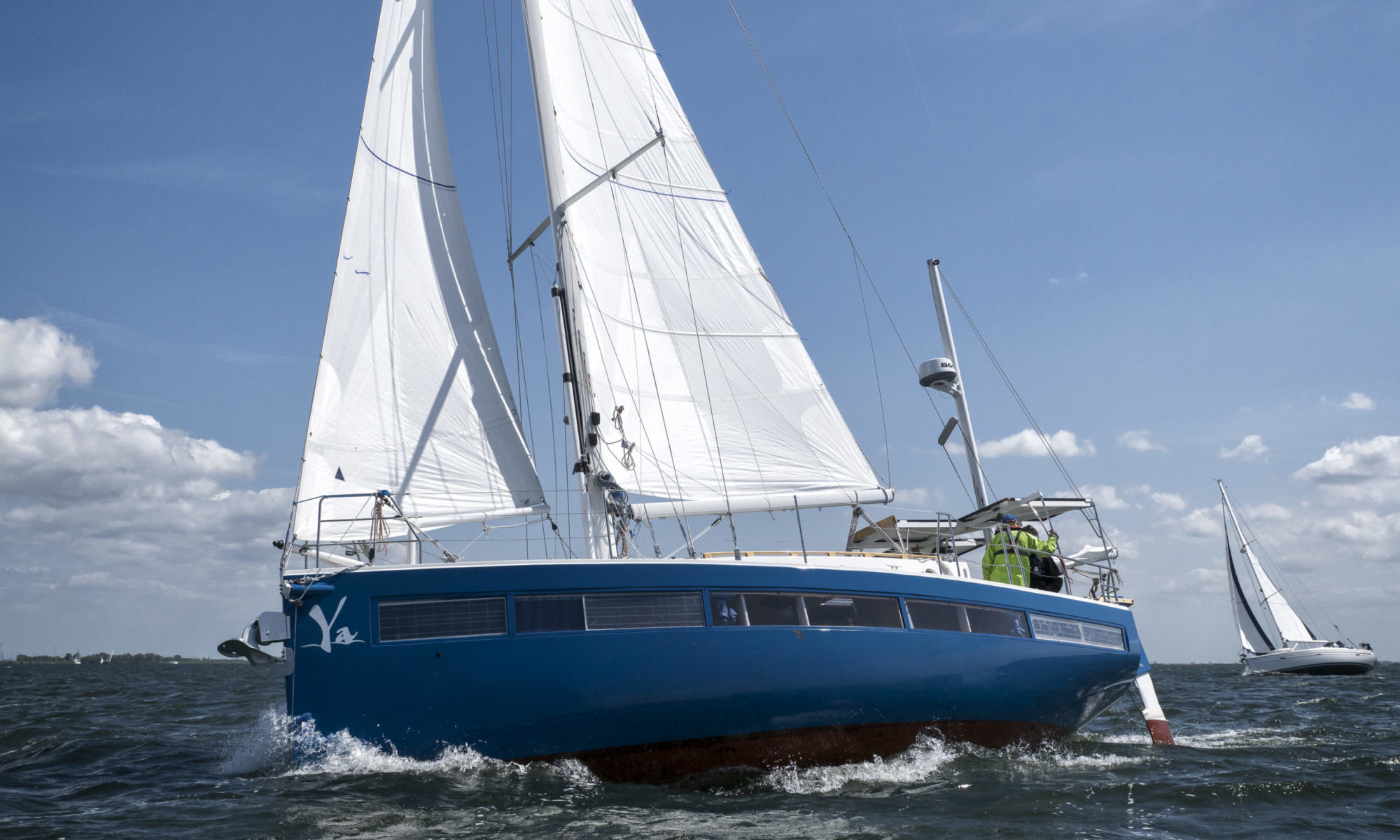For many years there is an annual status report on nuclear energy and the plants in the world. It is called ‘World Nuclear Energy Status Report’. It contains questions about the number of plants, the development and of course the assesment of the future.
Also the competition with the renewables (solar and wind energy) is part of it.
Since the renewables become cheaper every year, it is time to check for our costs. Would it be possible, affordable, welcome and sustainable to take solar, with a big battery bank, as an alternative for nuclear power?
In this blog we compare the costs.
The development of nuclear reactors
The picture here under shows the number of nuclear reactors now under construction.

Of the 59 plants under construction shown here, there are 27 in China. Is that a lot? Well, last year in China only 1 GigaWatt was added by nuclear power, versus 200 GigaWatt on solar power.
The USA, the early adaptor of nuclear power, did not build any reactors.
So actually, nuclear energy seems to be unattractive.
In the picture here under, there is an overview of all nuclear power plants existing in the world.

The graph clearly shows an upheaval from 1985. This is caused by the Chernobyl disaster in April 1986 and the following public opinion. This will be discussed in the next blog.
But, the nuclear power never became big again. And, from 2024 we even see it going down. Or, is that incidental?
Further development of solar panels and batteries vs nuclear
Year after year the solar panels become cheaper and more efficient. In general, the renewable energy cost less than the fossil and the nuclear energy. We see the same with the batteries: they become cheaper, with a higher efficiency. The costs per kWh sharply become less. We donot see this sharper curve on the technology of nuclear energy.
Nuclear power versus solar+battery power
The nuclear power plant has always the great advantage that it delivers power when there is no sun (and no wind). The only operational issue is that you can not easily stop it and switch it on again. A complete stop or start up, costs a lot of energy.
The solar panel and battery bank don’t have that ‘start-stop’ problem. When there is sun, electricity flows into the battery (and into the network) and when the sun stops shining, the battery takes over.
On the other hand, the battery is limited and the nuclear power plant can run endlessly. That is true for now, but it is getting less true. Since the solar and battery technology is getting more efficient and also cheaper, you simply install big battery banks. So, when there is no sun for one day, it is no problem. And for the near future, and with the current development, the battery banks will be bigger. The real relevance of the nuclear power plant gets smaller.
India just installed a solar+battery power plant which delivers cheaper electricity than a coal combustion plant, while the latter had always been the cheapest.
Net congestion and the home battery
Countries in the transition from gas to electricity, always have the problem of net congestion: it can happen that there is too much electricity running through the network. That would stop the whole system, so there is limited electricity. A complete new infrastructure would cost hunderds of billions, which is simply not possible.

A net congestion creates a lot of damage. A Dutch study shows that a company can not expand, caused by net congestion, it costs that company 11.000 Euro per mWh. This damage is about a hunderd fold of the normal tariff for a mWh.
But every installation of a home battery and solar panels, will relieve the net. This would save a lot of money for replacing cables in the streets, junction boxes, fuses, electricity stations, everything.
The nuclear energy however, would do the opposite, it creates net congestion. All infra structure, from power plant to the households and companies, have to be made larger, heavier. Only in the Netherlands this would cost tens of billions.
Waste costs and ‘external’ costs
The value of the solar panels and (lithium) batteries lowers, year by year. Finally, it will cost a bit to dismantle them. In general, the complete costs from the cradle to the grave are not high, and known and foreseeable.
The dismantling of a nuclear power plant costs a lot, if we want to prevent the risks on big environmental damage and great safety risks. Although they are foreseeable, they are seen as ‘external costs’. Only, when in 1997 the nuclear plant of Dodewaard was stopped and the new owner would take care for it, the dismantling costs were accepted to be internal costs. For safely reasons, they have to wait till 2045 to dismantle it. And now, it appears that the owner doesnot have enough money for it. Will the owner become bankrupt? This is an example that the costs for dismantling could still become ‘external costs’, meaning that it is the taxpayer who has to pay it.
Also on the risks of nuclear disasters the costs are categorised as ‘external costs’. Although the accidents occur already since the existence of the first plants. Meanwhile, we statistically know that these costs are there, but you will not find them in the business case.
Then, there are the costs of sustainable nuclear waste treatment. In particular the final dump is often an unsolved problem. The costs are mostly underestimated, or pushed forward. But, after so many accidents, and with much nuclear waste on unsustainable places, more and more people open the eyes and see these costs. In Finland a plant is built with the inclusion of the nuclear waste treatment. See this film . The construction time and costs doubled. We are talking many billions here.
Finally, it is remarkable that in the USA everybody seems to have abandoned the nuclear energy. The USA has a strong private law jurisdiction. This gives a victim of an accident the opportunity to an claim enormous amounts of money from a company responsible for the cause of an accident. Here appears a relation: if one already includes the costs of a risk for the claims from an accident, a nuclear power plant could be way to expensive.
Conclusion
If we really count all costs, so including the dismantling and the disaster management, the solar+battery combination wins already.
Still, politicians who are in favour of nuclear energy plants, externalise the waste treatment and risk costs, and put forward the argument that nuclear technology is ‘state of the art technology’. Most probably the development of solar and battery economy will make nuclear technology old fashioned.
But before that happens, you can read the next blogs in the following weeks, which will address the risks, the sustainability and the politicians dealing with it.
